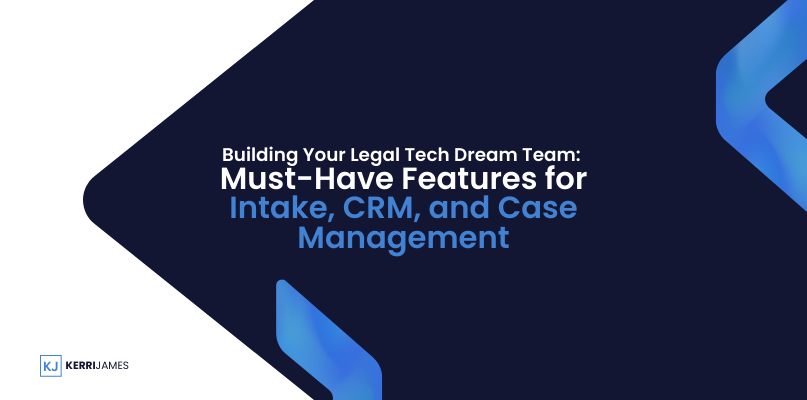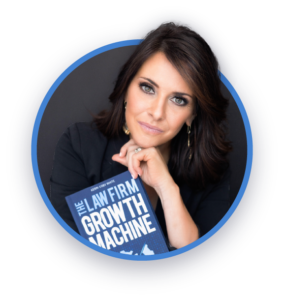The days of dusty law books and overflowing file cabinets are fading faster than a witness’s memory under cross-examination. Today’s legal professionals are embracing technology not as a luxury but as a strategic advantage in a competitive market.
But with a dizzying array of legal tech solutions available, choosing the right tools for your firm can feel overwhelming. Fear not – this guide will be your compass, outlining the must-have features to look for in three essential software categories: Legal Intake Systems, Client Relationship Management (CRM) systems, and Case Management Software.
Legal Intake: Where Client Relationships Are Won (or Lost)
Think of your intake system as the digital handshake of your law firm. It’s often the first point of contact for potential clients, so making it a smooth, efficient, and welcoming experience is paramount.
Here’s what to look for in a legal intake system:
User-Friendly Online Intake Forms: (Because Nobody Likes Clunky Paperwork)
- Customizable Fields and Workflows: Your forms should adapt to your firm’s specific practice areas and information needs.
- Mobile Responsiveness: In today’s mobile-first world, your intake forms must be easily accessible and navigable on any device – because you never know where a potential client might be when legal trouble strikes.
- E-Signature Integration: Streamline the client onboarding process with built-in electronic signature functionality. This eliminates the hassle of printing, scanning, and faxing documents (relics of a bygone era!).
Automated Appointment Scheduling (Time Is Money, After All): Integrate with your firm’s calendar system so potential clients can book consultations directly online based on your real-time availability, eliminating the dreaded phone tag.
Conflict Checking (Avoid Those Ethical Landmines): Seamless conflict checking functionality is non-negotiable! The software should instantly flag potential conflicts of interest based on new intake data, ensuring you comply with ethical rules and avoid potentially disastrous situations down the line.
- Lead Tracking and Reporting: Measure What Matters:
- Lead Source Tracking: Understanding where your leads are coming from is essential for optimizing your marketing efforts. The system should track which marketing channels, referrals, or online campaigns are driving the most qualified leads.
Conversion Rate Analytics: Measure how effectively your intake process is converting leads into paying clients. This data reveals friction points and opportunities for optimization.
Client Relationship Management (CRM): The Engine of Client-Centric Success
Your CRM system is the central nervous system of your law firm. It’s where you nurture client relationships, manage communication, and gain a holistic view of every interaction from the initial contact to case resolution – and hopefully, a long and fruitful relationship beyond.
Here’s what to look for in a legal CRM system:
- Centralized Contact Management: No More Client Data Scattered to the Wind: The system should store comprehensive information for each contact – including names, contact details, communication history, case notes, billing records, and any other relevant data points.
- Communication Tracking: Because Context is King (and Queen!) : Log every interaction with each client – emails, phone calls, meetings, text messages – to create a comprehensive communication history. This ensures continuity of service, especially if multiple team members interact with a client.
- Task Management & Reminders: Your Team’s Digital To-Do List: Assign tasks to specific team members, set target dates, and receive automatic reminders to stay on top of client communications, case deadlines, and other crucial to-do items.
- Email Marketing Integration: Personalized Communication, Effortlessly: A good CRM should integrate with email marketing platforms like MailChimp or Constant Contact, allowing you to segment your client list and send targeted communications. Think: newsletters tailored to specific practice areas or follow-up emails based on case status.
- Reporting and Analytics (Data Is Your Friend!): Track key performance indicators (KPIs) like client acquisition costs, lead conversion rates, and client satisfaction scores. These insights inform your strategies for optimizing client engagement and maximizing profitability.
Case Management Software: The Command Center for Effortless Case Handling
Gone are the days of managing cases with towering stacks of paper and endless spreadsheets. Modern legal practices demand a centralized, accessible, and secure platform to manage every aspect of a case, from document storage to time tracking to billing.
Here’s what to look for in case management software:
- Document Management: Your Virtual Filing Cabinet (But Far More Powerful):
- Secure Cloud Storage: Say goodbye to physical file rooms. Your case management software should offer secure, encrypted storage for all your case documents, accessible from anywhere with an internet connection.
- Version Control and Collaboration: The software should track document versions, allowing multiple team members to work on the same documents simultaneously without overwriting each other’s changes.
- Full-Text Search: No more wasted hours searching for a needle in a legal haystack. The ability to perform full-text searches across all your case documents is a lifesaver.
- Calendar & Task Management: Juggling Deadlines with Ease:
- Shared Calendars and Deadlines: The software should synchronize with individual calendars and provide firm-wide visibility of deadlines, court appearances, and client meetings; ensuring nothing slips through the cracks.
- Automated Reminders: Set automatic email or text message reminders for appointments and deadlines, reducing the risk of costly missed dates.
- Time Tracking and Billing: Effortlessly Track Every Billable Minute
- Integrated Timers: Start and stop timers within the software as you work on client tasks, ensuring accurate time records and maximizing billable hours.
- Automated Invoice Generation: Say goodbye to manual invoicing! Your case management software should generate invoices based on time entries, expenses, and your predefined billing structure, streamlining the process and improving cash flow.
- Online Payment Processing: Offer your clients the convenience of paying invoices online directly through the software, improving payment speed and minimizing the hassle of collecting payments manually.
The Power Trio: Choosing Software That Works in Harmony
While each of these software solutions plays a distinct role, they shouldn’t operate in silos. The most effective legal tech stacks integrate seamlessly, sharing data, and automating processes across different stages of the client lifecycle.
Here’s what to look for when considering integrations:
- Two-Way Data Syncing: Imagine this: a potential client fills out an online intake form – their information should automatically flow into your CRM and case management systems without the need for manual data entry.
- Seamless Workflow Automation: Trigger specific actions based on events in different systems. For example, when a client signs an engagement letter in your intake system, a new case file could automatically be created in your case management software, followed by a welcome email generated from your CRM.
Investing in Your Tech Future: The ROI Beyond the Software
Investing in the right legal tech solutions isn’t merely about checking boxes on a “features list”—it’s about transforming the way your law firm operates.
The true return on your investment lies in:
- Increased Efficiency and Productivity: By automating repetitive tasks, streamlining workflows, and improving communication, your team can focus on higher-value legal work – ultimately serving more clients and handling more complex cases.
- Enhanced Client Satisfaction: A seamless client journey from the initial inquiry to case resolution – driven by technology that empowers rather than replaces human interaction – cultivates lasting relationships, fosters trust, and generates valuable word-of-mouth referrals.
- Data-Driven Decision-Making: Access to robust analytics and reporting tools empowers you to make strategic decisions based on data, not assumptions.
The legal landscape is rapidly evolving, and technology isn’t a futuristic fantasy – it’s the present reality of building a competitive, efficient, and client-centric law practice.
By strategically evaluating your options and investing in legal tech solutions tailored to your specific needs, you can future-proof your firm for a dynamic market, setting the stage for sustainable success, improved profitability, and – perhaps, most importantly – more time to focus on what truly matters: delivering exceptional legal counsel and achieving justice for your clients.










